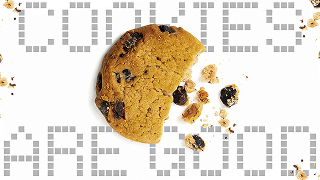
If you are dealing with an unstable marketplace, you might be looking for new ways to keep the lights on. One powerful tool at your disposal is the Merchant Cash Advance, often abbreviated to. The best way to define a merchant cash advance is that a lender is purchasing a certain percentage of your future receivables in exchange for a lump sum of money you can use today. Continue reading to learn more about how MCAs work and whether they might offer a solution for your current situation.
How do MCAs work?
As noted above, merchant cash advances are a purchase of a set percentage (generally 10-35%) of your future receivables. Repayment is tied to your daily sales, making it easier to manage your cash flow. If you didn't have a great day, you won't be responsible for paying too much on your MCA. If you had a great day, you can afford to pay back a little more without compromising the integrity of your business.
Repayment generally uses one of three mechanisms: credit card splits, ACH (automated clearing house) withholding, or lockbox. Credit card splits means that your payment processor automatically divides your revenue between your company's account and your lender according to the percentage defined in your agreement. You'll have to use a payment processor that your lender has a working relationship with, but otherwise this system is quick and efficient.
ACH withholding means that you share your banking info with your lender and they manually withdraw the percentage of your receivables they are entitled to. Many banks offer solutions for business owners who don't want to share their banking information with their MCA provider, providing limited access to your information while still allowing withdrawals.
Finally, lockbox arrangements create a third-party bank account where all of your revenues go. Your MCA provider takes their share, and then you gain access to the rest. This is a secure method of repayment, but some businesses struggle with how long they need to wait before accessing their revenue.
What advantages can an MCA offer?
Merchant cash advances provide a capital infusion into your company that you are free to utilize at your discretion. If you are a retailer running low on inventory, you can use the money to restock the shelves. If you run a restaurant that's struggling with outdated kitchen equipment, you can use the proceeds from an MCA to upgrade it. You can also use the money to pay essential bills as you ride out a difficult economic climate. Some lenders provide expertise and guidance to help business owners make the most of an MCA, but this advice is always optional.
You also don't need to worry about a credit check when you apply for a merchant cash advance. Most lenders only care about your receivables, meaning that any company with strong revenues is likely to qualify. Better yet, MCAs are processed quickly, frequently giving you access to your money within 48 hours of your initial application. Business opportunities can be fleeting, and the speed of a merchant cash advance ensures that you can seize them as they arise.
Are there any disadvantages to consider?
A merchant cash advance is technically not a loan, and therefore usury laws do not apply. This means that you may pay more interest on an MCA than you would for other financial products. Furthermore, you cannot get a new MCA before you pay off your old one, potentially limiting your financial flexibility in challenging times.
Most merchant cash advances are also based on your credit card sales, potentially hurting businesses that collect most of their revenues via other methods. You may also be responsible for added fees depending on your specific circumstances.
Conclusion
If your business needs a quick capital infusion with flexible repayment terms, a merchant cash advance may be the right fit for you. If you don't do a lot of credit card business or cannot find a repayment mechanism you like, you might need to look elsewhere for the financial support your business needs. Either way, understanding what an MCA is and what it can do can help you make the right decision for your situation.






